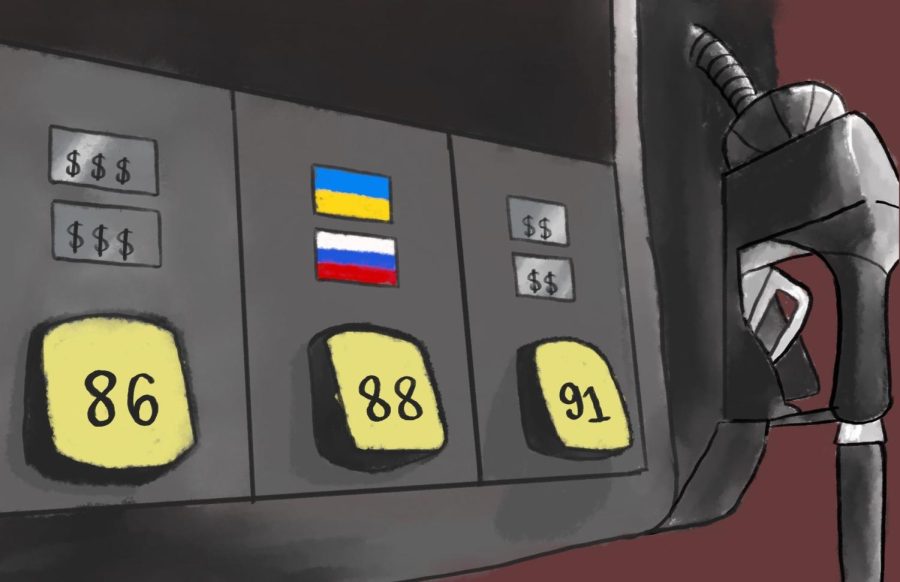Russian invasion takes toll on domestic gas prices
March 4, 2022
Oil and gas prices soared to a high peak because of investors’ fears that Russia’s invasion of Ukraine would hurt Russian exports and cause disruptions in the supply.
Russia is one of the world’s largest suppliers of energy and natural gas. It is also the world’s second biggest supplier of oil.
The geopolitical turmoil in Russia was bound to shake the market. After it launched a war on Ukraine, Russia has faced international opposition in the form of harsh sanctions.
This includes one that excludes the nation from The Society for Worldwide Interbank Financial Telecommunication, or SWIFT, a widely used global financial transaction system, and has hindered it from performing international transactions.
Consequently, imports have become expensive, harming companies that have to pay for goods and services from abroad, The Economist reported.
Additionally, the halted progress on the Nord Stream 2 pipeline project, which delivers natural gas from Russia to Germany, added tension to the soaring prices.
The oil industry was not immune to all of this since Russia is also a major supplier of the fuel. Interruptions in shipments of natural gas have raised concerns.
Oil prices experienced an increase in the United States because oil is a product of crude oil refinement, and the nation is a large importer of that energy source from Russia.
Reflecting the oil trouble, gas prices have increased nationwide, with New York State’s average regular price going up from $2.79 last year to $3.85 on March 2.
Furthermore, the European economy highly depends on Russia for natural gas, which is used for electricity, heating and home appliances.
The disruptions in the supply and the instability of Russia’s financial system have made investors panic.
Brent Crude, the global benchmark for oil prices, jumped to $112.93 per barrel on March 2, the highest it has been since 2014. For context, oil prices last year were $60 per barrel and ranged from $70 to $80 per barrel prior to the conflict escalating.
The price is expected to rise even more, as analysts from JPMorgan Chase & Co. predicted that it might reach $120 per barrel. If $120 per barrel is reached, inflation could reach 9%, hitting a new record and raising more concerns to curb it further.
U.S. benchmark West Texas Intermediate crude oil is $110.60 per barrel as of March 2.
Just as it seemed like inflation was being tackled, more uncertainty will hit the market with this new war. Inflation in the United States recently reached a 40-year high.
However, with current circumstances, inflation can get worse, and tackling it could lead to other issues.
Investors are trying to predict whether or not the Federal Reserve System policymakers will raise interest rates in their scheduled meeting later this month. Slowing inflation during these current circumstances will slow the economy and cause more disruptions.
In an effort to bring down prices, a parade of 31 countries announced that 60 million barrels of crude oil will be released from reserves. Unfortunately, that didn’t work, and the price continued to increase.
The failure was due to the move releasing a little amount of oil that reflected only 12 days worth of Russian exports.
OPEC had no response to the rising oil prices and has no new plans. It argued that the recent instability is a consequence of geopolitical reasons rather than fundamentals in the supply and demand, in which case it would be required to respond.
OPEC’s response was no surprise, as both Russia and Saudi Arabia profit from revenues behind the high oil prices.
Larger spending on oil will dampen spending in other areas, consequently hindering economic growth.
Just as the world was recovering from the COVID-19 pandemic and economic indicators began to show signs of normality, the panic has returned yet again at the market and the gas pump, and how long it will last this time could be anyone’s guess.









